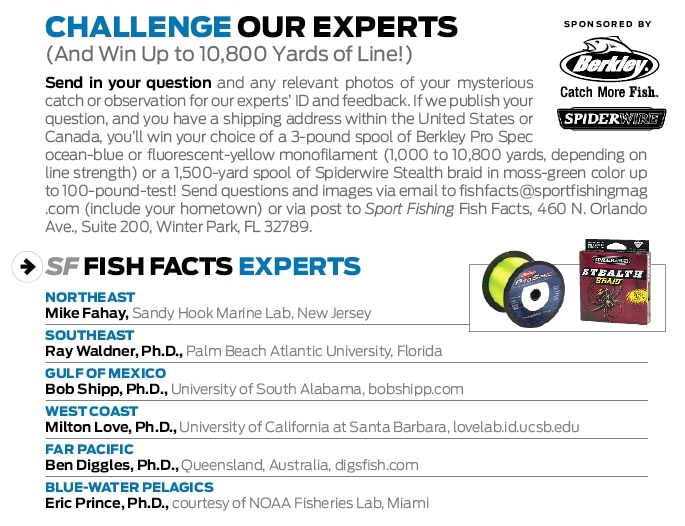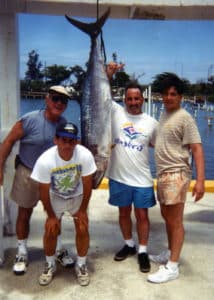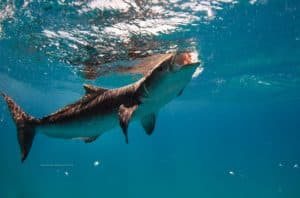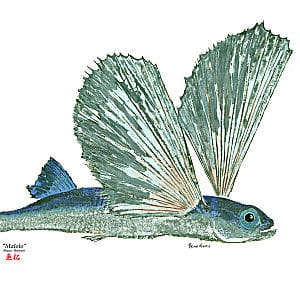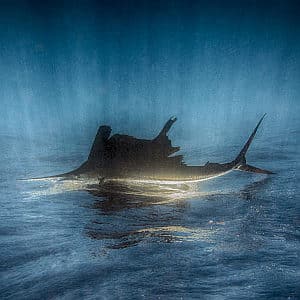In each issue of Sport Fishing magazine, a panel of five international expert ichthyologists identifies unusual and often amazing fishes in photos submitted by readers. Below you’ll find the I.D. and information for a few interesting catches from far and wide.
BOARDOM ON THE HIGH SEAS
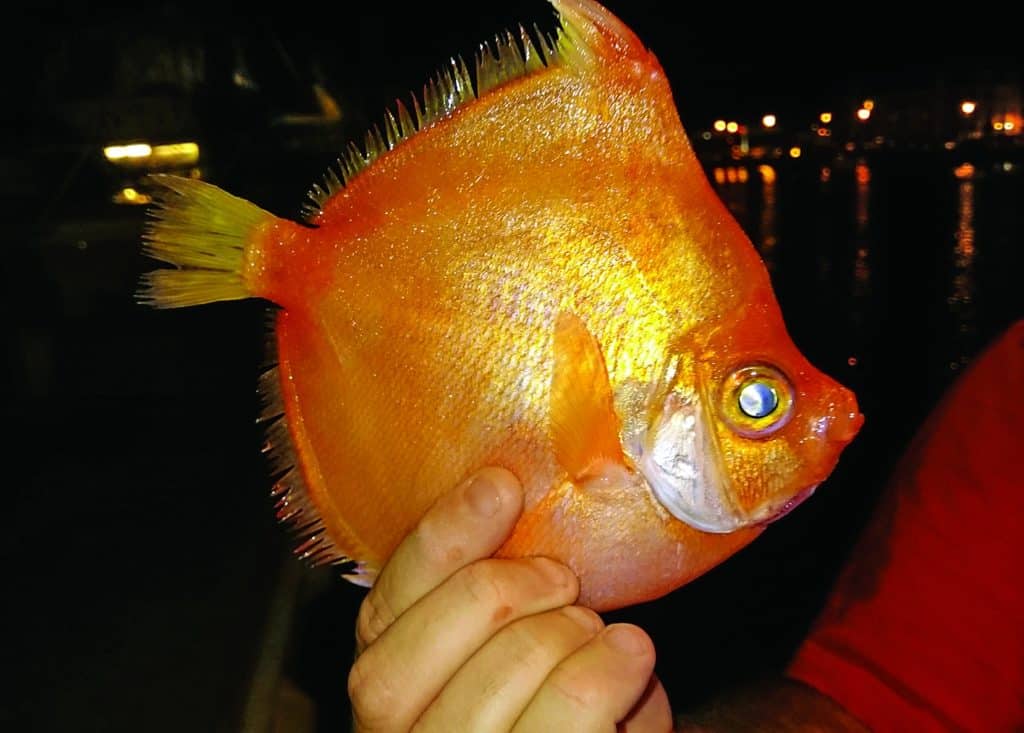
Ken Neill
Virginia Beach, Virginia Ken Neill
ANSWER: Ken, that’s a very unusual catch on hook and line. You captured a deepbody boarfish, Antigonia capros. Adults of this species are known to live near the ocean floor in 200 to 3,000 feet of water, while juveniles live higher up in the water column. Deepbody boarfish are found worldwide in tropical and subtropical oceans, where they feed on various mollusks and crustaceans. The species reaches a maximum length of just over a foot; it’s not marketed on a regular basis, although it’s sometimes an incidental catch by commercial fishermen. I don’t know anyone who has tasted one, so I can’t comment on its food value.
— Ray Waldner
FAR-PACIFIC JUNGLE PERCH
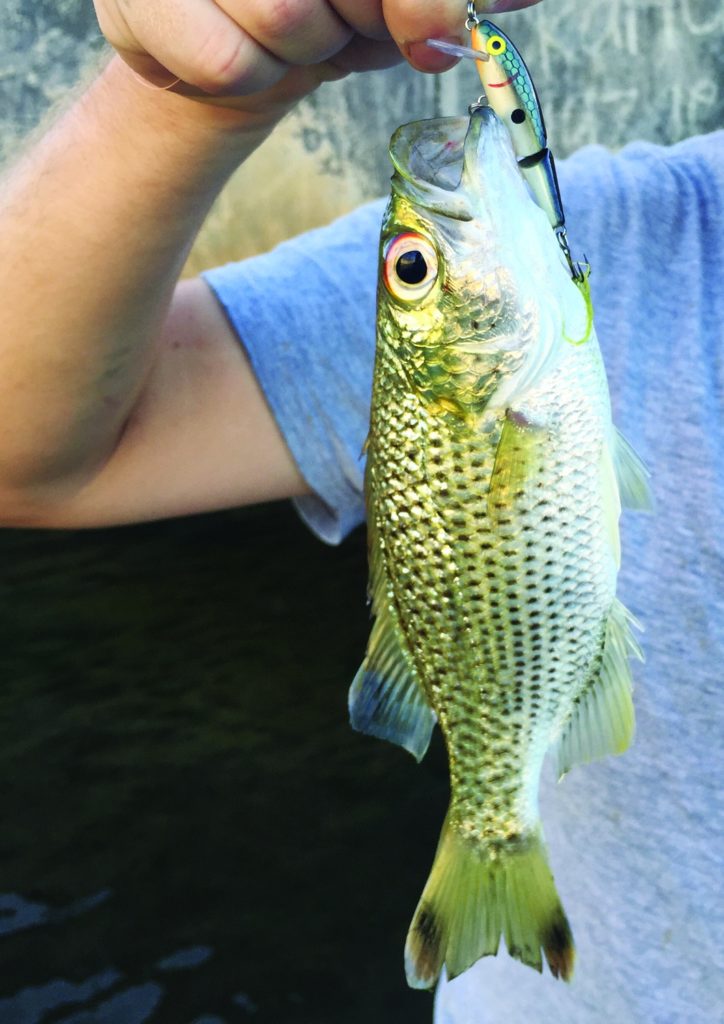
Bryce Duffy
Okeechobee, Florida Bryce Duffy
ANSWER: What you have there, Bryce, is a rock flagtail, Kuhlia rupestris, also known in Australia as jungle perch, or throughout the Pacific Islands as river fish. This species is the largest member of the family Kuhliidae (flagtails), with females growing to more than 20 inches long. In contrast, males seldom exceed 12 inches. The rock flagtail is also the most widespread of the family, occurring throughout coastal rivers in the Indo-Pacific region, from the western Indian Ocean to Japan and northern Australia, and as far east as Fiji and Samoa.
Flagtails were introduced to Hawaii in the 1960s but failed to acclimate. Rock flagtail spend a significant portion of their lives in freshwater reaches of clear, fast-flowing coastal rivers and streams, but adult fish (over 8 inches) seasonally migrate into brackish estuary and river-mouth areas to spawn. Indeed, planktonic eggs and larvae of K. rupestris survive in salt water for around 40 days before metamorphosing into juvenile fish. This longer period in the plankton stage compared to other flagtails is thought to have allowed the species to utilize currents to island-hop across the western Pacific. Once back in their coastal streams, juvenile and adult rock flagtail are omnivorous, feeding on small fish, crustaceans, and even insects and fruit.
— Ben Diggles
A HAKE OF A DIFFERENT COLOR
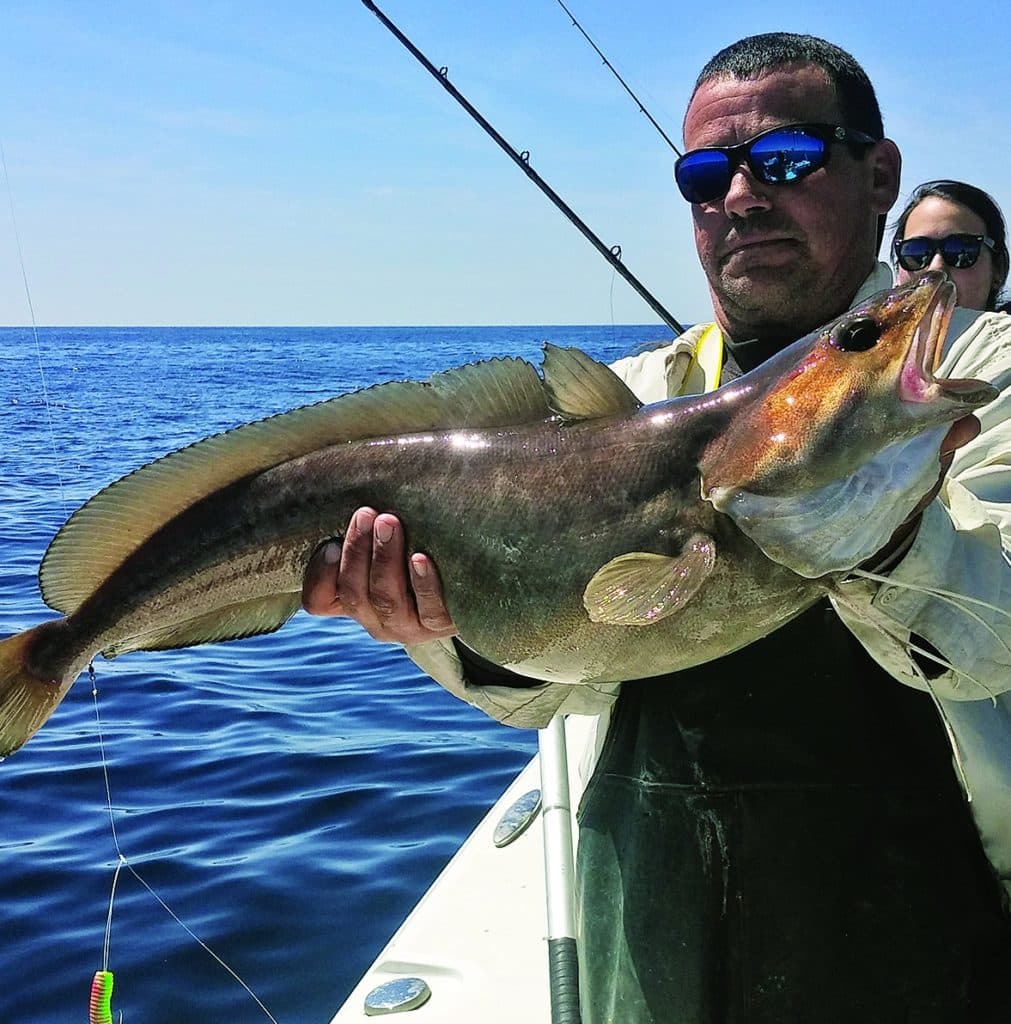
Nick Honachefsky
Mantoloking, New Jersey Nick Honachefsky
ANSWER: Any hake (genus Urophycis) that big has to be a white hake, U. tenuis. It’s also one of my personal favorite species, mostly because of its interesting life history. To positively ID the hakes, you only need to lift the gill cover and count the number of gill rakers on the upper limb (epibranchial) of the gill arch. The white hake has two, the red hake three. It’s as simple as that. (Spotted hake and long-finned hake have much different first dorsal fins.) You didn’t mention where offshore you were fishing, but you were probably near the continental shelf break or on the slope somewhere in the Middle Atlantic Bight, where this species lives and reproduces. The pelagic young typically drift as far north as the Gulf of Maine, where they are an important food item in the diets of puffins and terns. The first two or three years of their lives are spent there, until they reach a sexually mature size and recruit back to your fishing grounds. Fishing tabloids occasionally feature them on the cover, usually held up by a young angler to emphasize the fish’s relatively massive size. I’m particularly interested in the lobster you found in its stomach. Previous diet studies have not mentioned lobster as an item in their diets. Very cool! — Mike Fahay
AS THE WORM SQUIRMS
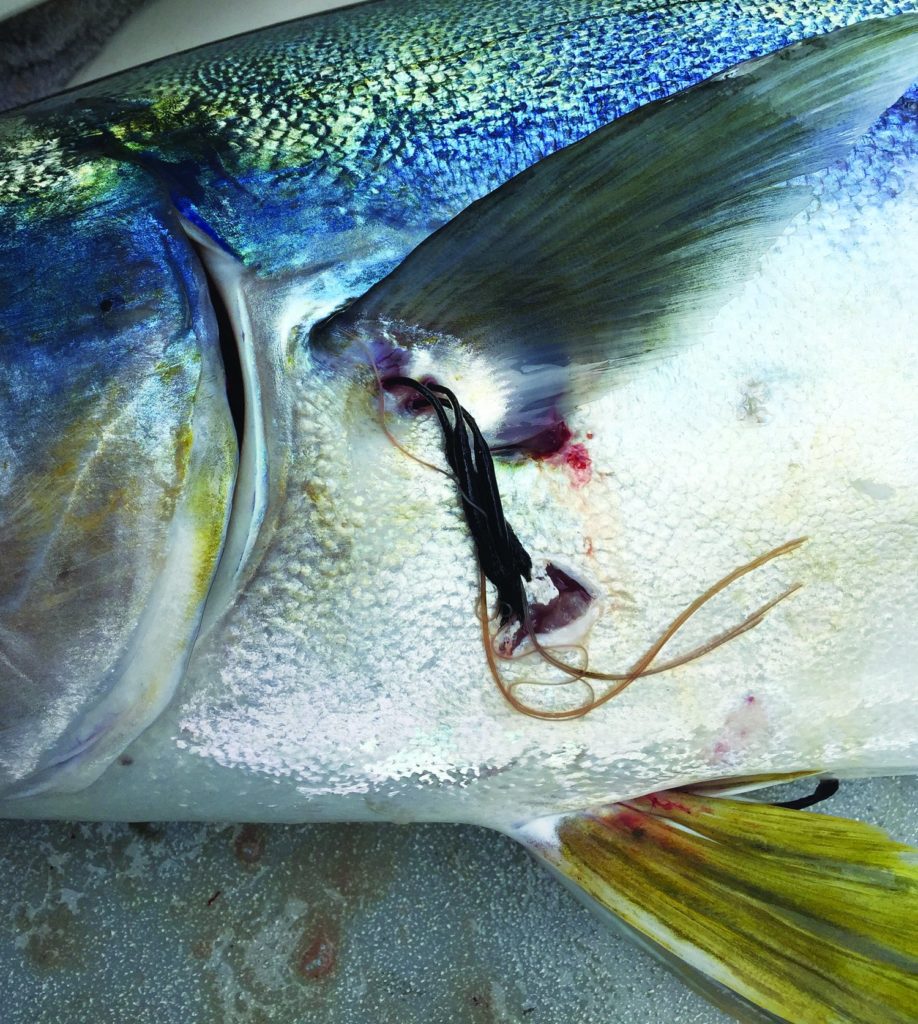
Peter J. Corselli
La Habra Heights, California Peter Corselli
ANSWER: Those black, ropelike things hanging out of your yellowtail are copepods, crustaceans in the family Pennellidae. There are no common names for these animals; parasitologists often refer to them as pennellids. Pennellids are found on many fish species, most obviously on pelagic species such as billfishes, tunas and jacks. All of these parasites bury their heads in the muscles of their fish hosts, with most of their bodies hanging outside the fish, in the water. At the most extreme, one pennellid, Cardiodectes medusaeus, burrows its head into the heart of deepwater lanternfishes. The pennellids in your photographs are females; those long tubular things hanging out the rear end of each animal are strings of eggs. Male pennelids are very small, and many die after mating. Particularly interesting is that in the year you caught this yellowtail, a number of divers and fishermen off Southern California also reported seeing yellowtail with these parasites, whereas in most years, these copepods apparently were only rarely present. We don’t know why this is, but that kind of thing is what keeps marine biologists coming into work each day. — Mike Fahay
FROM THE FISH FACTS ARCHIVES
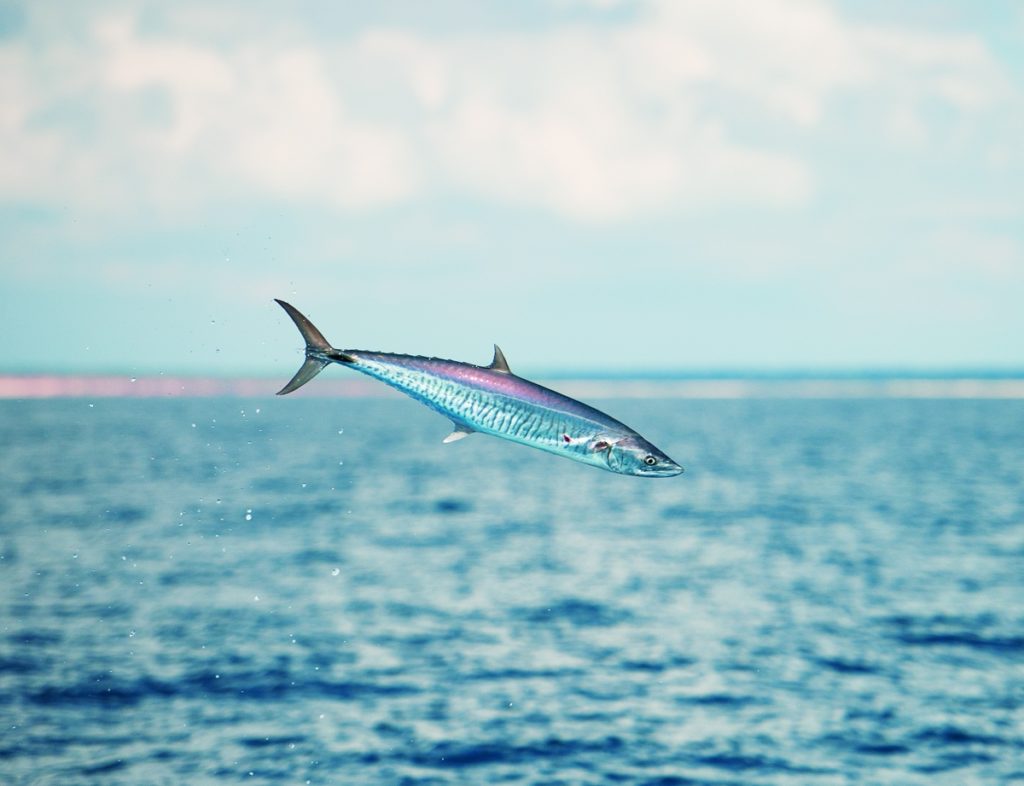
The Indo-Pacific version of the Atlantic’s king mackerel is the narrow-barred Spanish mackerel, often simply labeled “Spaniards” by Aussie anglers, for whom the species is a prime target. It grows about as large as the king: The all-tackle-record Spaniard weighed 99 pounds (1982, South Africa) to the king’s 93 pounds. But, as evidenced by this photo (which I can assure you is not in any way photoshopped), narrow-barred macks regularly jump — often spectacularly — when chasing poppers. Well named, these fish display characteristic wavy bars that distinguish them from other mackerels.
Send us YOUR strange or surprising catches!
